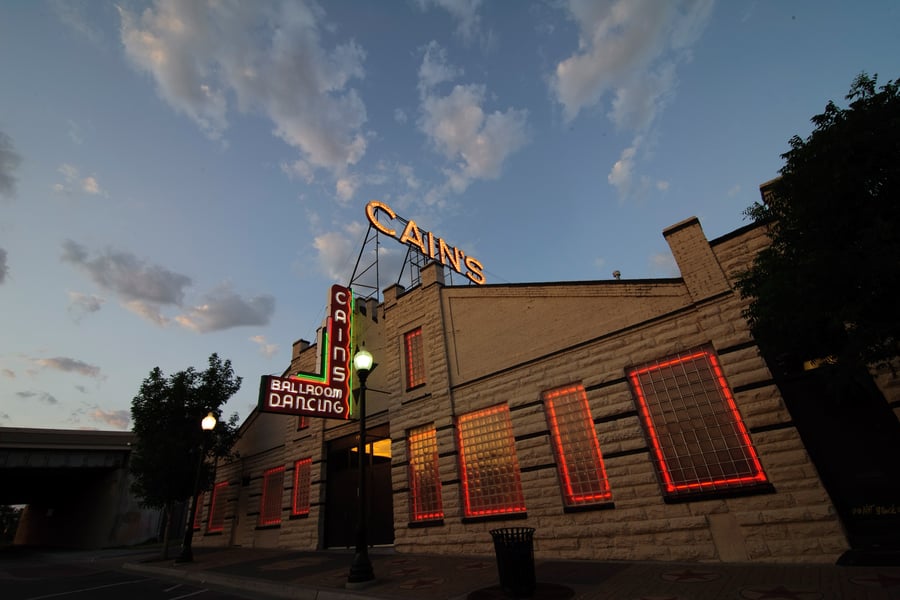In our new series, we look at eight cities where live music has exploded — from legendary hubs like New Orleans and Nashville and Chicago, to rising hot spots like Raleigh, North Carolina and Portland, Maine. The latest: Tulsa, where history, social consciousness and barroom jamming make it one of the most fun places to visit right now.
Jack White remembers the first time he stepped inside Cain’s Ballroom, a 1920s Tulsa dance hall where Bob Wills and the Texas Playboys once broadcast their weekly radio shows. “I basically almost fired my booking agent the moment I walked into that room,” White said recently. “Why do I not know about this place? I was really upset that nobody had ever told me about Tulsa.”
White fell in love with the rest of the city — including its art-deco architecture, and rich history in film (Francis Ford Coppola shot The Outsiders there) and music (Woody Guthrie and Leon Russell are Okie legends) — and bought a house in Tulsa. As the city grows and develops, its musical scene has exploded again; while Cain’s was booking about an act a month back in 2002, it now books 120, and will soon be hosting a live radio show. The city is also a major destination for music historians, with the recent additions of the Woody Guthrie Center and Bob Dylan Archive. Those buildings were both funded by George Kaiser, a businessman-turned-philanthropist who wants to make Tulsa a major destination. Here’s why he might be right.
In the early Seventies, J.J. Cale brought Tulsa’s country-soaked rock nationwide. His spirit is alive at Paul Benjaman’s Sunday Nite Thing. Benjaman, a grizzled guitar slinger, welcomes a rotating cast of talented local heroes like John Fullbright, whose piano-based heartland folk songs made him a hero in Nashville and beyond. “A different guest each week keeps it fresh,” says Benjaman. “It ties together a bunch of different styles, from honky-tonk to R&B.” Benjaman says the scene is a lot more fun these days: “Over the last decade it’s become more of a communal thing: we’re all creating bands that use each other’s rhythm sections. It’s a real easy hang.”
While folkies like Fullbright and John Moreland are channeling Guthrie’s spirit, a new group of rappers are making music described as “politically conscious, subliminal street,” says Steph Simon, who just released a concept album about the city’s 1921 race riot and massacre. “Tulsa is much more diverse than it was 15 years ago,” says R&B singer Branjae.
The Bob Dylan Archive, which opens in 2021, is already home to 6,000 artifacts from Dylan’s personal collection. They include his leather jacket from Newport and the “Visions of Johanna” lyrics. A public museum will feature highlights. “As this stuff becomes older, you want it to be more organized for generations,” says a source close to the Dylan camp.
If you want to see where Tom Petty signed his first recording contract, arrange a tour at Church Studios. It’s Leon Russell’s historic studio and the former home of Shelter Records where everyone from Willie Nelson to Dr. John to Peter Tosh recorded in the Seventies. The studio is currently being renovated and refurbished, and is expected to completed by late 2020. “There’s a lot of TLC that’s needed to bring it back,” said architect Chris Lilly. Also: jazz fans should head to the Greenwood Cultural Center; the spot where Count Basie discovered jazz is now a museum.
The Gathering Place, a new 66-acre park full of trippy sculptures, is largely the result of hundreds of millions in donations by Kaiser, the billionaire behind the Guthrie and Dylan centers.






































